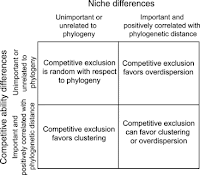In this era of species loss and habitat degradation, understanding the link between biodiversity and functioning of species assemblages is a critically important area of research. Two decades of research has shown that communities with more species or functional types results in higher levels of ecosystem functioning, such as nutrient processing rates, carbon sequestration and productivity, among others. This research has typically used controlled experiments that standardize environmental influences and manipulate species diversity. However, a number of people have hypothesized that biodiversity may be even more important for the maintenance of ecosystem functioning during times of environmental stress or change rather than under stable, controlled conditions. It is during these times of environmental change that preserving ecological function is most important, as changes in function can have cascading effects on other trophic levels, compounding environmental stress. Therefore, explicitly testing how biodiversity affects function under environmental stress can help to inform management decisions.

Image from Wikimedia commons
In a recent paper in the Journal of Applied Ecology, Li and colleagues examine how algal biodiversity influences productivity in microcosms with differing cadmium concentrations. Cadmium (Cd) is a heavy metal used in a number of products and industrial processes, but it is toxic and Cd pollution is a concern for human populations and biological systems, especially aquatic communities. This is especially true in nations currently undergoing massive industrial expansion. In response to concerns about Cd pollution effects on aquatic productivity, Li et al. used algal assemblages from single species monocultures to eight species polycultures grown under a Cd-free control and two concentrations of Cd, and measured algal biomass.
Their results revealed that there was only a weak biodiversity-biomass relationship in the Cd-free teatment, which the authors ascribed to negative interactions offsetting positive niche partitioning. In particular, those species that were most productive in their monocultures were the most suppressed in polycultures. However, in microcosms with Cd present there were positive relationships between diversity and biomass. They attribute this to a reduction in the strength of competitive interactions and the opportunity for highly productive species to persist in the communities.
While a plethora of experiments generally find increased ecosystem function with greater diversity, Li et al.’s research indicates that the effect of biodiversity on function may be even more important in polluted systems. If this result can be duplicated in other systems, then this gives added pressure for management strategies to maintain maximal diversity as insurance against an uncertain future.
Li, J., Duan, H., Li, S., Kuang, J., Zeng, Y., & Shu, W. (2010). Cadmium pollution triggers a positive biodiversity-productivity relationship: evidence from a laboratory microcosm experiment Journal of Applied Ecology, 47 (4), 890-898 DOI: 10.1111/j.1365-2664.2010.01818.x




